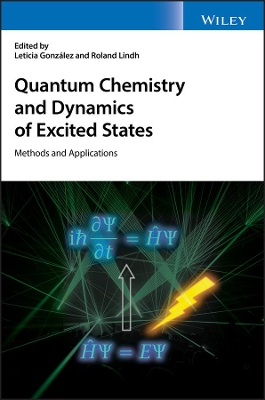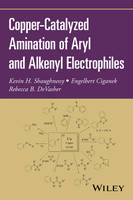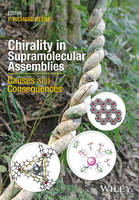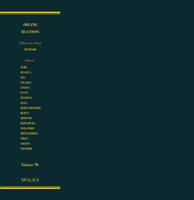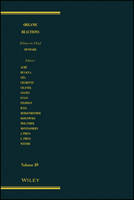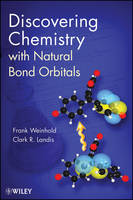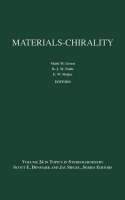Handbook of Free Radical Initiators
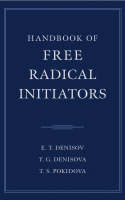 -15%
portes grátis
-15%
portes grátis
Handbook of Free Radical Initiators
Denisov, E. T.; Pokidova, T. S.; Denisova, T. G.
John Wiley & Sons Inc
04/2003
904
Dura
Inglês
9780471207535
15 a 20 dias
1346
PART I: INITIATORS.
Chapter 1. Mechanism of Decomposition of Initiators.
1.1 Introduction.
1.2 Nonconcerted Unimolecular Decomposition.
1.3 Concerted Fragmentation of Initiators.
1.4 Anchimerically Assisted Decomposition of Peroxides.
1.5 Decay of Initiators to Free Radicals and Molecular Products.
1.6 Chain Decomposition of Initiators.
References.
Chapter 2. Cage Effect.
2.1 Introduction.
2.2 Experimental Evidence for the Cage Effect.
2.3 Mechanistic Schemes of Cage Effect.
2.4 Cage Effect in Solid Polymers.
References.
Chapter 3. Methods of Study of Initiator Decomposition and Free Radical Generation.
3.1 Kinetic Decay of Initiator (KDI).
3.2 Kinetic Product Formation (KPF).
3.3 Acceptors of Free Radicals (AFR).
3.4 Kinetic Chain Initiated Reaction (KIR).
3.5 Chemiluminescence (CL) Method.
References.
Chapter 4. Dialkyl Peroxides and Hydroperoxides.
4.1 Dialkyl Peroxides.
4.2 Hydroperoxides and Peracids.
References.
Chapter 5. Diacyl Peroxides, Peroxy Esters, Polyatomic, and Organometallic Peroxides.
5.1 Diacyl Peroxides.
5.2 Peroxy Esters.
5.3 Decomposition of Polyatomic Peroxides.
5.4 Organometallic Peroxides.
References.
Chapter 6. Organic Polyoxides.
6.1 Dialkyl Trioxides.
6.2 Hydrotrioxides.
6.3 Tetroxides.
References.
Chapter 7. Azo Compounds.
7.1 Synthesis and Structure of Azo Compounds.
7.2 Thermochemistry of Azo Compounds.
7.3 Decomposition of Azo Compounds.
References.
Chapter 8. Compounds with Weak C-C, N-N, C-N and N-O Bonds.
8.1 Polyphenylhydrocarbons.
8.2 Substituted Hydrazines.
8.3 Alkoxyamines.
8.4 Nitro Compounds.
8.5 Nitrates and Nitrites.
8.6 Disulfides and Polysulfides.
8.7 Organometallic Compounds.
References.
PART II: BIMOLECULAR REACTIONS OF FREE RADICAL GENERATION.
Chapter 9. Parabolic Model of Bimolecular Homolytic Reaction.
9.1 Introduction.
9.2 Principles for the Parabolic Model of Bimolecular Homolytic Reaction.
9.3 Parameters of Bimolecular Homolytic Reaction in the Parabolic Model.
References.
Chapter 10. Bimolecular and Trimolecular Reactions of Free Radical Generation by Dioxygen.
10.1 Reaction of Dioxygen with C-H Bonds of Organic Compounds.
10.2 Reaction of Dioxygen with the Double Bond of Olefins.
10.3 Trimolecular Reaction of Radical Initiation by Dioxygen.
References.
Chapter 11. Bimolecular Reactions of Free Radical Generation by Ozone.
11.1 Initiation of Radicals by Ozone Reactions.
11.2 Chain Reactions of Ozone Decomposition.
References.
Chapter 12. Bimolecular Reactions of Hydroperoxides with Free Radical Generation.
12.1 Bimolecular Decomposition of Hydroperoxides.
12.2 Bimolecular Reactions of Hydroperoxides with a ?-Bond to Olefins.
12.3 Bimolecular Reactions of Hydroperoxides with C-H, N-H, and O-H Bonds of Organic Compounds.
12.4 Acid Catalysis for Homolytic Reactions of Hydroperoxides.
12.5 Reaction of Peroxides with Amines.
References.
Chapter 13. Free Radical Generation by Olefins.
13.1 Reactions of Retrodisproportionation.
13.2 Chain Initiation in Thermal Radical Polymerization.
References.
Chapter 14. Free Radicals Generation by Haloid Molecules and Nitrogen Dioxide.
14.1 Reactions of Fluorine Compounds.
14.2 Reactions of Dichlorine and Other Chlorine Compounds.
14.3 Initiation by Nitrogen Dioxide.
References.
Chapter 15. Free Radical Generation by Reactions of Ions with Molecules.
15.1 Decomposition of Hydrogen Peroxide Catalyzed by Transition Metal Ions.
15.2 Catalysis by Ions and Complexes of Transition Metals in Liquid-Phase Oxidation of Organic Compounds.
15.3 Reactions of Free Radicals with Transition Metal Ions.
15.4 Oxidation of Transition Metal Ions by Dioxygen.
15.5 Oxidation of Organic Compounds by Transition Metal Ions.
15.6 Reduction of Peroxides by Radical Anions.
References.
PART III: REACTIONS OF FREE RADICALS.
Chapter 16. Isomerization and Decomposition of Free Radicals.
16.1 Intramolecular Abstraction of Hydrogen Atom.
16.2 Cyclization of Free Radicals.
16.3 Decyclization of Cyclic Radicals.
16.4 Fragmentation of Free Radicals.
References.
Chapter 17. Free Radical Abstraction Reactions.
17.1 Classification of Radical Abstraction Reactions.
17.2 Enthalpy of Reaction.
17.3 Force Constants of Reacting Bonds.
17.4 Triplet Repulsion.
17.5 Electron Affinity of Atoms in Reaction Center.
17.6 Repulsion of Atoms Forming the Reaction Center.
17.7 Influence of ?-Bonds in the Vicinity of the Reaction Center.
17.8 Steric Effect.
17.9 Polar Effect in Radical Reactions.
17.10 Effect of Multidipole Interaction.
17.11 Solvating Effect.
References.
Chapter 18. Free Radical Reactions of Hydrogen Transfer and Substitution.
18.1 Reactions of Hydrogen Atom Transfer from a Free Radical to a Molecule.
18.2 Free Radical Substitution Reactions.
18.3 Reaction of Peroxides with Ketyl Radicals.
References.
Chapter 19. Free Radical Addition.
19.1 Enthalpy and Entropy of Free Radical Addition.
19.2 Empirical Correlation Equations.
19.3 Quantum Chemical Calculations for the Activation Energy.
19.4 Parabolic Model of Radical Addition.
19.5 Contribution of Enthalpy for an Addition Reaction to Its Activation Energy.
19.6 Force Constants of Reacting Bonds.
19.7 Triplet Repulsion in the Transition State of Addition Reactions.
19.8 Influence of Neighboring ?-Bonds on the Activation Energy of Radical Addition.
19.9 Role of the Radius of the Atom Bearing the Free Valence.
19.10 Interaction of Two Polar Groups.
19.11 Multidipole Interaction in Addition Reactions.
19.12 Steric Hindrance.
19.13 Addition of Alkyl Radicals to Dioxygen.
References.
Chapter 20. Recombination and Disproportionation of Free Radicals.
20.1 Alkyl Radicals.
20.2 Macroradicals.
20.3 Peroxyl Radicals.
References.
Index.
PART I: INITIATORS.
Chapter 1. Mechanism of Decomposition of Initiators.
1.1 Introduction.
1.2 Nonconcerted Unimolecular Decomposition.
1.3 Concerted Fragmentation of Initiators.
1.4 Anchimerically Assisted Decomposition of Peroxides.
1.5 Decay of Initiators to Free Radicals and Molecular Products.
1.6 Chain Decomposition of Initiators.
References.
Chapter 2. Cage Effect.
2.1 Introduction.
2.2 Experimental Evidence for the Cage Effect.
2.3 Mechanistic Schemes of Cage Effect.
2.4 Cage Effect in Solid Polymers.
References.
Chapter 3. Methods of Study of Initiator Decomposition and Free Radical Generation.
3.1 Kinetic Decay of Initiator (KDI).
3.2 Kinetic Product Formation (KPF).
3.3 Acceptors of Free Radicals (AFR).
3.4 Kinetic Chain Initiated Reaction (KIR).
3.5 Chemiluminescence (CL) Method.
References.
Chapter 4. Dialkyl Peroxides and Hydroperoxides.
4.1 Dialkyl Peroxides.
4.2 Hydroperoxides and Peracids.
References.
Chapter 5. Diacyl Peroxides, Peroxy Esters, Polyatomic, and Organometallic Peroxides.
5.1 Diacyl Peroxides.
5.2 Peroxy Esters.
5.3 Decomposition of Polyatomic Peroxides.
5.4 Organometallic Peroxides.
References.
Chapter 6. Organic Polyoxides.
6.1 Dialkyl Trioxides.
6.2 Hydrotrioxides.
6.3 Tetroxides.
References.
Chapter 7. Azo Compounds.
7.1 Synthesis and Structure of Azo Compounds.
7.2 Thermochemistry of Azo Compounds.
7.3 Decomposition of Azo Compounds.
References.
Chapter 8. Compounds with Weak C-C, N-N, C-N and N-O Bonds.
8.1 Polyphenylhydrocarbons.
8.2 Substituted Hydrazines.
8.3 Alkoxyamines.
8.4 Nitro Compounds.
8.5 Nitrates and Nitrites.
8.6 Disulfides and Polysulfides.
8.7 Organometallic Compounds.
References.
PART II: BIMOLECULAR REACTIONS OF FREE RADICAL GENERATION.
Chapter 9. Parabolic Model of Bimolecular Homolytic Reaction.
9.1 Introduction.
9.2 Principles for the Parabolic Model of Bimolecular Homolytic Reaction.
9.3 Parameters of Bimolecular Homolytic Reaction in the Parabolic Model.
References.
Chapter 10. Bimolecular and Trimolecular Reactions of Free Radical Generation by Dioxygen.
10.1 Reaction of Dioxygen with C-H Bonds of Organic Compounds.
10.2 Reaction of Dioxygen with the Double Bond of Olefins.
10.3 Trimolecular Reaction of Radical Initiation by Dioxygen.
References.
Chapter 11. Bimolecular Reactions of Free Radical Generation by Ozone.
11.1 Initiation of Radicals by Ozone Reactions.
11.2 Chain Reactions of Ozone Decomposition.
References.
Chapter 12. Bimolecular Reactions of Hydroperoxides with Free Radical Generation.
12.1 Bimolecular Decomposition of Hydroperoxides.
12.2 Bimolecular Reactions of Hydroperoxides with a ?-Bond to Olefins.
12.3 Bimolecular Reactions of Hydroperoxides with C-H, N-H, and O-H Bonds of Organic Compounds.
12.4 Acid Catalysis for Homolytic Reactions of Hydroperoxides.
12.5 Reaction of Peroxides with Amines.
References.
Chapter 13. Free Radical Generation by Olefins.
13.1 Reactions of Retrodisproportionation.
13.2 Chain Initiation in Thermal Radical Polymerization.
References.
Chapter 14. Free Radicals Generation by Haloid Molecules and Nitrogen Dioxide.
14.1 Reactions of Fluorine Compounds.
14.2 Reactions of Dichlorine and Other Chlorine Compounds.
14.3 Initiation by Nitrogen Dioxide.
References.
Chapter 15. Free Radical Generation by Reactions of Ions with Molecules.
15.1 Decomposition of Hydrogen Peroxide Catalyzed by Transition Metal Ions.
15.2 Catalysis by Ions and Complexes of Transition Metals in Liquid-Phase Oxidation of Organic Compounds.
15.3 Reactions of Free Radicals with Transition Metal Ions.
15.4 Oxidation of Transition Metal Ions by Dioxygen.
15.5 Oxidation of Organic Compounds by Transition Metal Ions.
15.6 Reduction of Peroxides by Radical Anions.
References.
PART III: REACTIONS OF FREE RADICALS.
Chapter 16. Isomerization and Decomposition of Free Radicals.
16.1 Intramolecular Abstraction of Hydrogen Atom.
16.2 Cyclization of Free Radicals.
16.3 Decyclization of Cyclic Radicals.
16.4 Fragmentation of Free Radicals.
References.
Chapter 17. Free Radical Abstraction Reactions.
17.1 Classification of Radical Abstraction Reactions.
17.2 Enthalpy of Reaction.
17.3 Force Constants of Reacting Bonds.
17.4 Triplet Repulsion.
17.5 Electron Affinity of Atoms in Reaction Center.
17.6 Repulsion of Atoms Forming the Reaction Center.
17.7 Influence of ?-Bonds in the Vicinity of the Reaction Center.
17.8 Steric Effect.
17.9 Polar Effect in Radical Reactions.
17.10 Effect of Multidipole Interaction.
17.11 Solvating Effect.
References.
Chapter 18. Free Radical Reactions of Hydrogen Transfer and Substitution.
18.1 Reactions of Hydrogen Atom Transfer from a Free Radical to a Molecule.
18.2 Free Radical Substitution Reactions.
18.3 Reaction of Peroxides with Ketyl Radicals.
References.
Chapter 19. Free Radical Addition.
19.1 Enthalpy and Entropy of Free Radical Addition.
19.2 Empirical Correlation Equations.
19.3 Quantum Chemical Calculations for the Activation Energy.
19.4 Parabolic Model of Radical Addition.
19.5 Contribution of Enthalpy for an Addition Reaction to Its Activation Energy.
19.6 Force Constants of Reacting Bonds.
19.7 Triplet Repulsion in the Transition State of Addition Reactions.
19.8 Influence of Neighboring ?-Bonds on the Activation Energy of Radical Addition.
19.9 Role of the Radius of the Atom Bearing the Free Valence.
19.10 Interaction of Two Polar Groups.
19.11 Multidipole Interaction in Addition Reactions.
19.12 Steric Hindrance.
19.13 Addition of Alkyl Radicals to Dioxygen.
References.
Chapter 20. Recombination and Disproportionation of Free Radicals.
20.1 Alkyl Radicals.
20.2 Macroradicals.
20.3 Peroxyl Radicals.
References.
Index.


